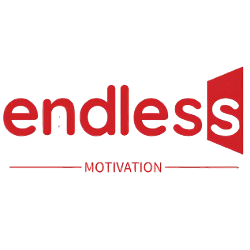Feeling anxious? Instead of scrolling through your phone or spiraling into worry, grab a pen and let your hand move freely on paper. Anxiety-reducing doodling isn’t just for artists—it’s a proven therapeutic tool backed by neuroscience to lower stress, improve focus, and quiet an overactive mind.
In this 1,700-word guide, you’ll learn:
✅ Why doodling works for anxiety (the neuroscience behind it)
✅ 5 types of calming doodles (even if you “can’t draw”)
✅ Step-by-step exercises to try right now
✅ How therapists use doodling in mindfulness practices
Why Doodling Reduces Anxiety (The Science)
1. It Activates the “Rest and Digest” Response
- Doodling engages the default mode network (DMN) in your brain, which lowers cortisol (stress hormone) by up to 26% (Harvard Medical School).
- Unlike focused drawing, mindless doodling doesn’t trigger perfectionism—making it ideal for anxiety relief.
2. It’s a Form of “Moving Meditation”
- Repetitive shapes (like mandalas or waves) induce a flow state, similar to meditation (Journal of Applied Cognitive Psychology).
- Bonus: It’s more accessible than traditional meditation for restless minds.
3. It Distracts the Amygdala (Your Brain’s Alarm System)
- Anxiety stems from an overactive amygdala. Doodling occupies your hands, giving your brain a “task” to focus on instead of panic (NIH Study).
5 Types of Anxiety-Reducing Doodles (With Examples)
1. Zentangle Patterns (Structured Repetition)
How: Fill a small square with repeating lines, curves, or dots.
Why It Works: The predictable rhythm soothes racing thoughts.
Try This:
- Draw a grid of 4 boxes.
- Fill each with a different pattern (e.g., stripes, spirals).
2. Nature Doodles (Organic Shapes)
How: Sketch leaves, waves, or clouds without lifting your pen.
Why It Works: Natural shapes trigger biophilia (innate calm from nature).
Pro Tip: Use curved lines only—they’re more relaxing than sharp angles.
3. “Scribble Therapy” (Chaos to Calm)
How:
- Scribble aggressively for 10 seconds.
- Slowly refine it into something (e.g., a face, animal).
Why It Works: Mimics emotional release → control.
4. Mandala Coloring (Pre-Drawn Templates)
How: Print a mandala and color mindlessly.
Why It Works: Combines repetition + low-pressure creativity.
Free Templates: Try PrintableMandala.net.
5. “Worry Dump” Doodles
How:
- Write down anxious thoughts in bubble letters.
- Doodle over them until they’re obscured.
Why It Works: Symbolically “erases” worries (Art Therapy Journal).
Step-by-Step: 5-Minute Anxiety Doodle Exercise
Supplies Needed: Pen + paper (no eraser!).
- Set a Timer: 5 minutes (prevents overthinking).
- Choose a Type: Pick one from the list above.
- Doodle Freely: No judging, no stopping.
- Reflect: How do you feel? Lighter? More focused?
Pro Tip: Keep an “anxiety doodle journal” to track patterns in your stress triggers.
How Therapists Use Doodling for Anxiety
1. Art Therapy Sessions
- Therapists often use guided doodling to help clients:
- Externalize emotions (e.g., “Doodle your anxiety as a monster”).
- Process trauma without words (effective for PTSD).
2. School and Workplace Programs
- Companies like Google and schools in Finland use doodle breaks to:
- Reduce burnout in employees.
- Improve focus in ADHD students.
3. CBT (Cognitive Behavioral Therapy) Integration
- Clients doodle negative thought loops, then physically cross them out to symbolize breaking the cycle.
Common Mistakes (And How to Fix Them)
❌ Mistake 1: Trying to “Draw Well”
- Fix: Use ugly doodles—they’re more therapeutic.
❌ Mistake 2: Doodling on Screens
- Fix: Pen + paper engages the brain 3x more (University of Washington).
❌ Mistake 3: Giving Up Too Soon
- Fix: Commit to 7 days straight—neuroplasticity needs repetition.
30-Day Anxiety Doodle Challenge
Week 1: Try a new doodle type daily.
Week 2-4: Combine doodling with deep breathing (inhale for 4 strokes, exhale for 4).
Track Progress: Note anxiety levels (1-10) before/after each session.
Final Thought: Let Your Pen Do the Healing
You don’t need artistic skill—just a willingness to let go and scribble. Anxiety-reducing doodling turns chaotic energy into creative calm, one line at a time.
Your Turn: Grab a pen and try it now. What emerged on the page? Comment below!

